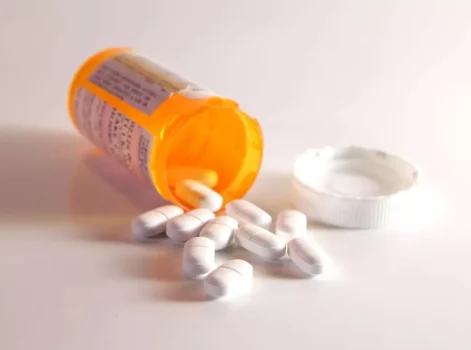
Similarly, individuals who have consumed more alcohol are more likely to become alcoholics than individuals who have consumed less alcohol. Alcohol use actually rewires the brain to desire and depend on alcohol, and these effects are cumulative. Both internal and external factors contribute to the development of alcoholism. Internal factors include genetics, psychological conditions, personality, personal choice, and drinking history.
- If you think you are dependent on alcohol, your doctor will ask you about your symptoms and experiences.
- However, a person who has not yet developed a biological dependence on alcohol may still choose to drink maladaptively despite being aware of warning signs or personal risk factors.
- Patients with AUD experience intense cravings for alcohol that drive ongoing consumption.
- It also includes binge drinking — a pattern of drinking where a male has five or more drinks within two hours or a female has at least four drinks within two hours.
- Substance use frequently co-occurs with mental illness, but some research suggests that psychiatrists only treat addiction for around half of the patients who have both mental illness and substance use problems.
More on Substance Abuse and Addiction
At this point, AUD symptoms start to interfere with your personal and work life. For instance, you might miss important family events or meetings with co-workers because you’ve been drinking. Physical symptoms such as weight gain (or loss) usually show up in this mid-stage, too.
Effects of Alcohol Addiction on The Brain
Young people are more susceptible to peer pressure and messages in advertising. In college, they’re exposed to the additional risk factor of binge drinking. In a clinical setting, motivational interviewing, which cultivates the drive to change behaviors, and Screening, Brief Intervention, Referral, and Treatment (SBIRT), which funnels patients to treatment, are also helpful options. There are many organized programs that provide the support of peers, usually through frequent meetings. Alcoholics Anonymous is one example; it offers a structured 12-step path toward recovery with a community of support from those who have dealt with similar challenges. The idea that altered forms of consciousness such as mania or alcohol can enhance creativity is a popular belief.
Role of Withdrawal-Related Stress and Anxiety in Relapse
When this occurs repeatedly over time, and when it begins to impact your health and your life, alcohol misuse can become AUD. The disorder can also be broken down further into mild, moderate, and severe subtypes. Although it may seem counterintuitive, suddenly cutting yourself off from all alcohol when you’re physiological dependence on alcohol a heavy drinker can also become a medical emergency. If your AUD is moderate or severe, you’re at risk of developing delirium tremens (DT), a life-threatening form of alcohol withdrawal. Check with your doctor about the safest way to cut back if you’re used to regularly drinking large amounts of alcohol.
Understanding Alcohol Use Disorder

The expectations an individual has about drinking also play a big role. Individuals who have positive expectations about alcohol’s impacts are more likely to develop alcoholism than individuals who have negative expectations about alcohol’s effects. Slips can be fueled by withdrawal symptoms, mental health challenges, and drug-related cues, such as spending time with old drinking partners or visiting old drinking locations. Triggers become engrained in addiction, so it’s valuable to recognize these cues, avoid them, and replace them with new behaviors, such as calling a sponsor or loved one when craving alcohol, which can help avoid a relapse. Alcohol use disorder is a problematic pattern of alcohol use that leads to distress in one’s daily life, according to the DSM-5. Experiencing at least two symptoms throughout the course of a year merits a diagnosis, from mild to moderate to severe.

You should ask a loved one to stay with you during this process, and you may need to visit a clinician for daily monitoring. According to a study published in the journal Preventing Chronic Disease, 90% of people who abuse alcohol are not alcohol dependent. Alcohol dependence refers to being unable to stop drinking without experiencing symptoms of withdrawal. People often continue drinking to alleviate these unpleasant symptoms. Members of certain sub-cultures are more likely to engage in alcohol abuse, which in many cases is actively encouraged by other members and seen as a method of gaining acceptance. Usually, a diagnosis of alcohol use disorder does not involve a diagnostic test.
Alcohol Use Disorder: Symptoms, Treatment & Screening
The one-year prevalence rate of anxiety disorders among those with alcohol dependence in the general population has been reported to be 36.9%. While alcohol in low doses may improve performance on complex mental tasks during stressful situations, its use has been shown to increase stress response mechanisms. Learn about safely withdrawing from alcohol, the symptoms of withdrawal, and the importance of medical supervision during the process for a healthier transition. Finally, epidemiologists need a definition of alcoholism that enables them to identify alcoholics within a population that may not be available for individual examination.

Phone, Video, or Live-Chat Support
- More than 178,000 Americans die each year as a result, and drinking alcohol is a factor in more than half of all murders, suicides, and traffic accidents in the U.S.
- Brain structures can shift as well, particularly in the frontal lobes, which are key for planning, making decisions, and regulating emotions.
- Alcoholics Anonymous is one example; it offers a structured 12-step path toward recovery with a community of support from those who have dealt with similar challenges.
- Its mission involves educating, supporting, and empowering people in their pursuit of well-being.
- This is of particular concern when you’re taking certain medications that also depress the brain’s function.
The ability to plan ahead, learn and hold information (like a phone number or shopping list), withhold responses as needed, and work with spatial information (such as using a map) can be affected. Brain structures can shift as well, particularly in the frontal lobes, which are key for planning, making decisions, and regulating emotions. But many people in recovery show improvements in memory and concentration, even within the first month of sobriety.

Alcohol Use Disorder: From Risk to Diagnosis to Recovery
By modifying the required response (e.g., increasing the number of lever presses required before the alcohol is delivered) researchers can determine the motivational value of the stimulus for the animal. 1In operant procedures, animals must first perform a certain response (e.g., press a lever) before they receive a stimulus (e.g., a small amount of alcohol). Males, college students, and people going through serious life events or trauma are more likely to experience AUD. As you recover from AUD, you may find it helpful to see a psychotherapist who uses cognitive behavioral therapy (CBT) techniques.



